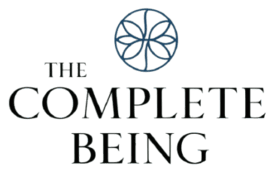Communication is the heartbeat of every strong relationship, yet many couples find themselves feeling unheard and misunderstood. You may love your spouse deeply, but if they do not feel truly listened to, frustration and distance can creep in. Imagine a scenario where one partner is sharing their struggles, but the other is distracted, checking their phone, or thinking about how to respond instead of truly absorbing what is being said. Over time, this lack of attentiveness creates emotional walls, making even small conflicts seem insurmountable.
Active listening is one of the most powerful tools in communication, helping couples bridge the gap between speaking and truly understanding. It is not just about hearing words but about being fully present, empathizing with emotions, clarifying thoughts, and responding with intention rather than reacting defensively. When practiced consistently, active listening fosters deeper emotional connection, mutual respect, and a safe space for honest conversations, ultimately transforming relationships into stronger, more fulfilling partnerships.
What Is Active Listening?
Active listening goes beyond passive hearing. It is the intentional act of fully engaging in a conversation by focusing on the speaker’s words, emotions, and underlying messages. While hearing is a passive function of the ears, listening requires effort, patience, and empathy.
The difference between hearing and listening is critical. Hearing is simply perceiving sound, but listening with intent means absorbing, processing, and responding in a way that makes the other person feel understood. When communication lacks active listening, misunderstandings arise, and emotional disconnection follows. Many conflicts are not about lack of love but about the absence of feeling valued and heard.
Why Active Listening Matters in Relationships
Active listening is not just a communication skill but a foundation for strong, enduring relationships. When practiced consistently, it leads to several key benefits.
It fosters emotional intimacy, allowing both partners to feel deeply connected. When someone listens with full attention, it signals that their thoughts and feelings matter, strengthening the bond between them.
It builds mutual respect, creating a culture of appreciation and value. Relationships thrive when both partners feel their words hold weight and that their perspectives are acknowledged.
It reduces misunderstandings, ensuring that what is communicated is accurately received. Many disagreements stem not from real issues but from misinterpretations and assumptions. Active listening eliminates guesswork, preventing unnecessary conflicts.
It creates a safe space where both partners feel comfortable expressing themselves openly. A relationship that prioritizes active listening becomes a sanctuary for honest conversations, leading to a deeper understanding of one another’s needs, fears, and dreams.
Key Elements of Active Listening
Several essential components make active listening truly effective in strengthening relationships.
Giving full attention means being mentally and physically present in the conversation. This involves putting away distractions, making eye contact, and demonstrating through body language that you are engaged. Simply nodding, leaning in slightly, or mirroring your partner’s emotions shows attentiveness and care.
Empathizing with emotions allows for deeper understanding. Instead of just processing the words being spoken, focus on the feelings behind them. When your partner shares frustration, sadness, or excitement, validate their emotions by acknowledging them rather than dismissing or minimizing their experience.
Clarifying and reflecting ensure that the message being received is accurate. Asking follow-up questions or summarizing what your partner has said helps prevent miscommunication. Simple phrases like, “So what I hear you saying is…” or “It sounds like you feel…” confirm that you are truly listening and seeking to understand.
Responding rather than reacting is key to maintaining a respectful and constructive dialogue. Many people listen with the intent to reply instead of understanding. Avoid interrupting, formulating a rebuttal while your partner is speaking, or becoming defensive. Thoughtful responses foster open and productive conversations.
Non-verbal communication plays a crucial role in showing attentiveness. Facial expressions, nodding in agreement, and an open posture reinforce that you are engaged. Avoid crossing your arms, looking away frequently, or checking your phone, as these actions signal disinterest or impatience.
Common Barriers to Active Listening and How to Overcome Them
Despite its importance, several obstacles hinder effective listening, but they can be overcome with awareness and practice.
Distractions, such as technology, work stress, or external noise, often interfere with focused conversations. Setting aside designated time for meaningful discussions, away from screens and interruptions, ensures both partners feel valued. Prioritizing quality time over multitasking strengthens emotional connection.
Defensive listening, where individuals listen only to defend their position rather than to understand, leads to conflicts. Approaching conversations with curiosity instead of defensiveness fosters deeper communication. Taking a deep breath before responding and reminding yourself that the goal is connection rather than competition helps shift the dynamic.
Assumptions and biases distort communication by making one partner assume they already know what the other means. Entering conversations with an open mind, rather than preemptively judging or predicting responses, allows for authentic understanding. Asking clarifying questions instead of assuming helps prevent misinterpretation.
Emotional triggers often cause individuals to react strongly rather than listen patiently. When a sensitive topic arises, taking a moment to acknowledge personal triggers and responding thoughtfully instead of impulsively can lead to healthier discussions. Practicing self-awareness and recognizing when emotions are clouding judgment fosters more productive conversations.
Practical Steps to Improve Active Listening in Your Relationship
Implementing active listening requires intentional effort, but small, consistent changes can make a significant impact.
Setting aside quality time for uninterrupted conversations ensures both partners feel heard. Prioritizing check-ins, whether during meals, before bed, or during walks, creates space for meaningful dialogue without distractions.
Using “I” statements encourages open and honest communication without placing blame. Instead of saying, “You never listen to me,” reframe it as, “I feel unheard when we talk, and I really value our conversations.” This shifts the conversation from confrontation to connection.
Mirroring and validating what your partner says reassures them that their thoughts and feelings are acknowledged. Simply repeating their key points or expressing understanding helps them feel valued. A statement like, “I hear that you’re feeling overwhelmed, and I understand why that’s frustrating,” reinforces empathy.
Asking open-ended questions invites deeper discussions. Instead of closed questions like, “Did you have a good day?” try, “What was the best part of your day, and what was the most challenging?” This encourages meaningful conversation rather than surface-level responses.
Practicing patience by resisting the urge to interrupt or fix the issue immediately allows space for deeper emotional expression. Sometimes, your partner does not need solutions; they simply need to be heard and understood.
The Transformative Power of Active Listening in Real Life
Many couples experience significant breakthroughs when they commit to practicing active listening. A real-life example is a couple who struggled with constant arguments because they felt unheard. By setting aside dedicated time to listen without distractions, validating each other’s feelings, and responding with empathy rather than defensiveness, they saw a remarkable shift. Conversations became less about proving a point and more about fostering connection. Over time, their relationship transformed from a cycle of miscommunication to a bond built on trust and understanding.
Bringing It All Together, Strengthening Your Relationship Through Listening
Active listening is a powerful tool that can transform relationships by fostering intimacy, trust, and emotional safety. It requires intentionality, patience, and a genuine desire to understand your partner beyond just words.
Starting small can lead to significant improvements. Committing to practicing even one or two active listening techniques daily can create noticeable changes in communication and emotional connection.
A simple challenge can be committing to one week of mindful listening, focusing entirely on your partner’s words and emotions without distractions or immediate reactions. Noticing the difference in how they respond and how the relationship feels can be a testament to the power of truly listening.
Conclusion, A Call to Deeper Connection
Listening is one of the greatest acts of love. It goes beyond words and actions, creating a foundation where both partners feel safe, valued, and understood. Even if communication has been a challenge, change is always possible with consistent effort and a willing heart.
Reflecting on how you listen and making small but intentional improvements can lead to deeper connections, reduced conflicts, and a more fulfilling relationship. The journey toward better communication begins with one simple step: listening with love and purpose.



A wonderful serenity has taken possession of my entire soul, like these sweet mornings of spring which I enjoy with my whole heart. I am alone, and feel the charm of existence in this spot, which was created for the bliss of souls like mine. I am so happy.
my dear friend, so absorbed in the exquisite sense of mere tranquil existence, that I neglect my talents.
I feel that I never was a greater artist than now. When, while the lovely valley teems with vapour around me, and the meridian sun strikes the upper surface of the impenetrable foliage of my trees, and but a few stray gleams steal into the inner sanctuary.